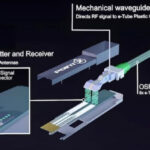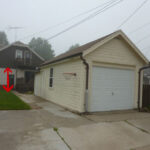A cut or damaged power cord is not only inconvenient but also dangerous. Exposed or broken wires can cause electric shock, fire hazards, or damage to your device. While some minor issues can be repaired safely at home, in many cases the best solution is replacing the cord entirely.

fixing a cut power cord
This article explains how to fix a cut power cord, what tools you’ll need, and when replacement is the safer choice.
⚠️ Safety Warning: Never attempt to repair a cord while it’s plugged in. If the cord powers a high-wattage appliance (like a dryer, heater, or microwave), replacement is strongly recommended.
When Can a Power Cord Be Repaired?
Safe to Repair: Small appliances, extension cords, lamps, and light-duty cords.
Replace Instead: Heaters, microwaves, refrigerators, dryers, and heavy-duty tools.
If the damage is too close to the plug or device, replacement is usually the only safe option.
Tools and Materials You’ll Need
Wire cutters/strippers
Electrical tape (UL-listed) or heat-shrink tubing
Wire nuts or butt connectors
Crimping tool (if using connectors)
Replacement cord (if damage is severe)
Step-by-Step: Fixing a Cut Power Cord
1. Unplug the Cord
Always disconnect from power before starting.
2. Inspect the Damage
If only the outer jacket is nicked but the wires inside are intact → cover with electrical tape or heat-shrink tubing.
If the wires are exposed or cut → continue with a splice repair.
3. Remove the Damaged Section
Cut out the bad portion using wire cutters. Ensure the ends are even.
4. Strip the Wires
Strip about ½ inch (12 mm) of insulation from each wire end. You will usually see:
Black (hot)
White (neutral)
Green or bare (ground)
5. Reconnect the Wires
Match each color to its pair:
Option A: Wire Nuts – Twist wires together and secure with a wire nut.
Option B: Butt Connectors – Insert wires into a connector, crimp tightly, and cover with heat-shrink tubing.
6. Seal the Repair
Wrap each connection individually with electrical tape.
Then wrap the entire repaired section for added durability.
If using heat-shrink tubing, apply heat until it tightly seals the repair.
7. Test the Cord
Plug the cord into a GFCI outlet or power strip with surge protection.
If it works normally and does not heat up, the repair is successful.
If you see sparks, smell burning, or notice unusual heat → unplug immediately.
Alternative: Replace the Entire Cord
Sometimes replacement is easier and safer than repair:
Buy a replacement cord from hardware stores or online retailers.
For appliances like dryers, refrigerators, or power tools, use OEM or heavy-duty cords.
Conclusion
Fixing a cut power cord is possible with the right tools and care. Use proper splicing methods, insulate thoroughly, and always test safely. However, for high-power appliances or cords with extensive damage, replacement is the safest option.
👉 When in doubt, don’t risk it—replace the cord or call a professional electrician.





